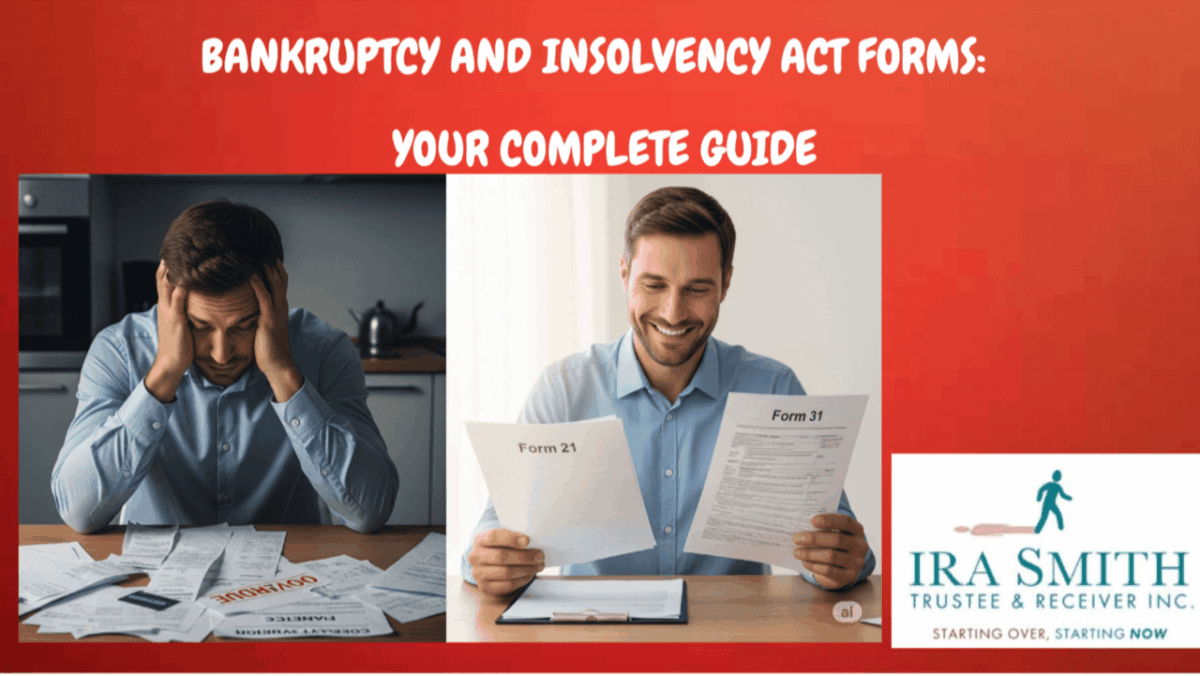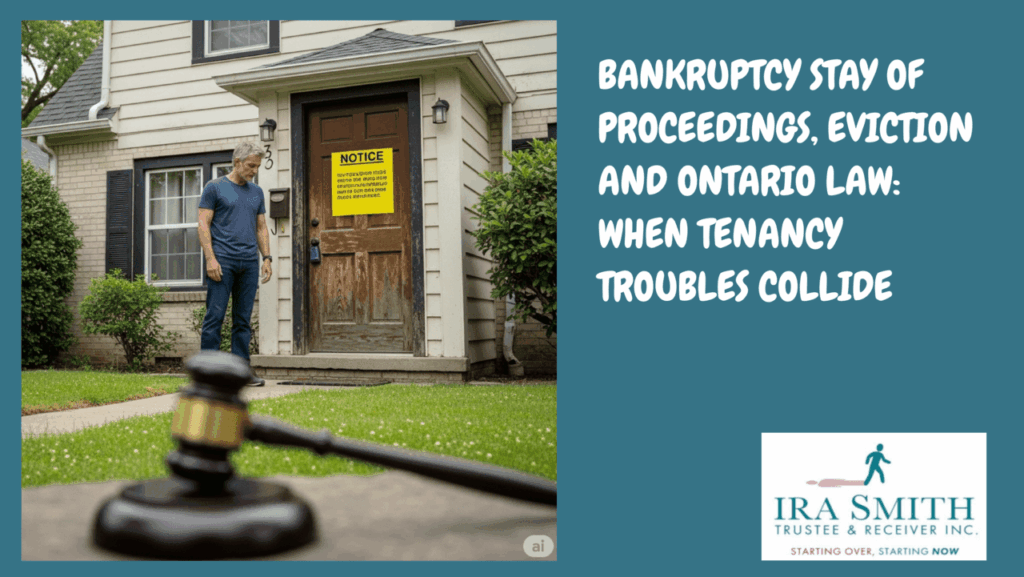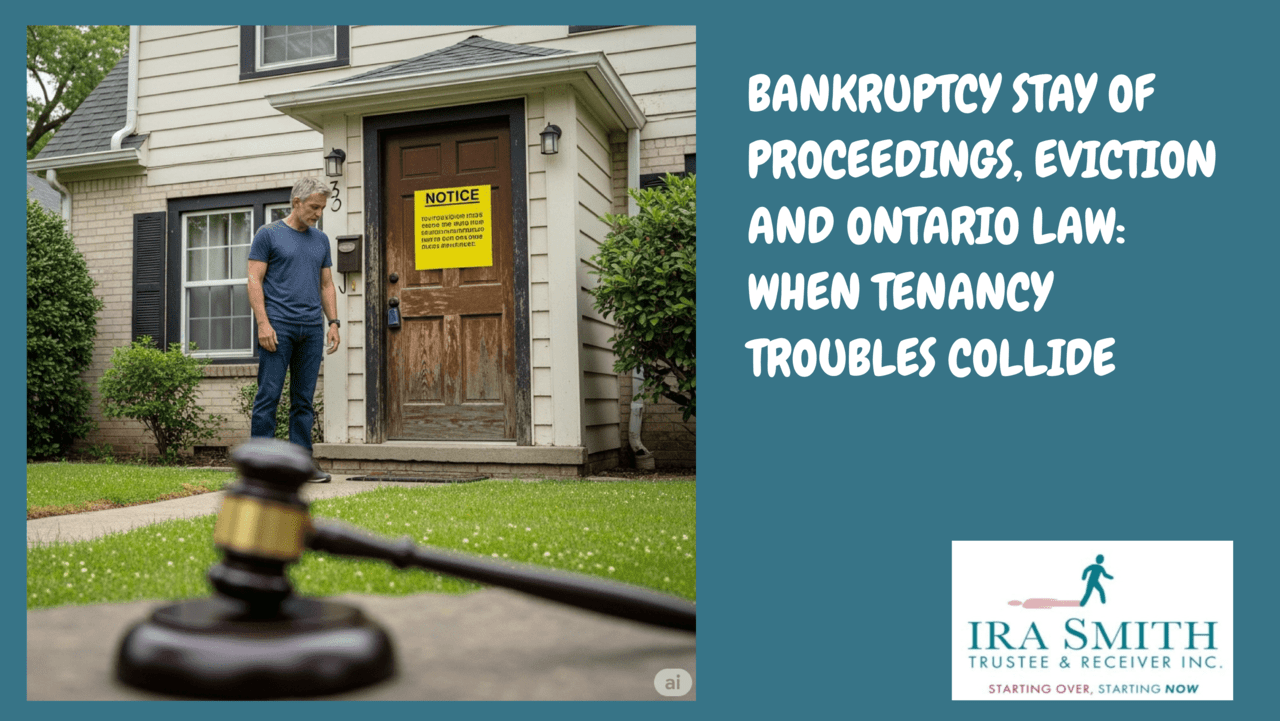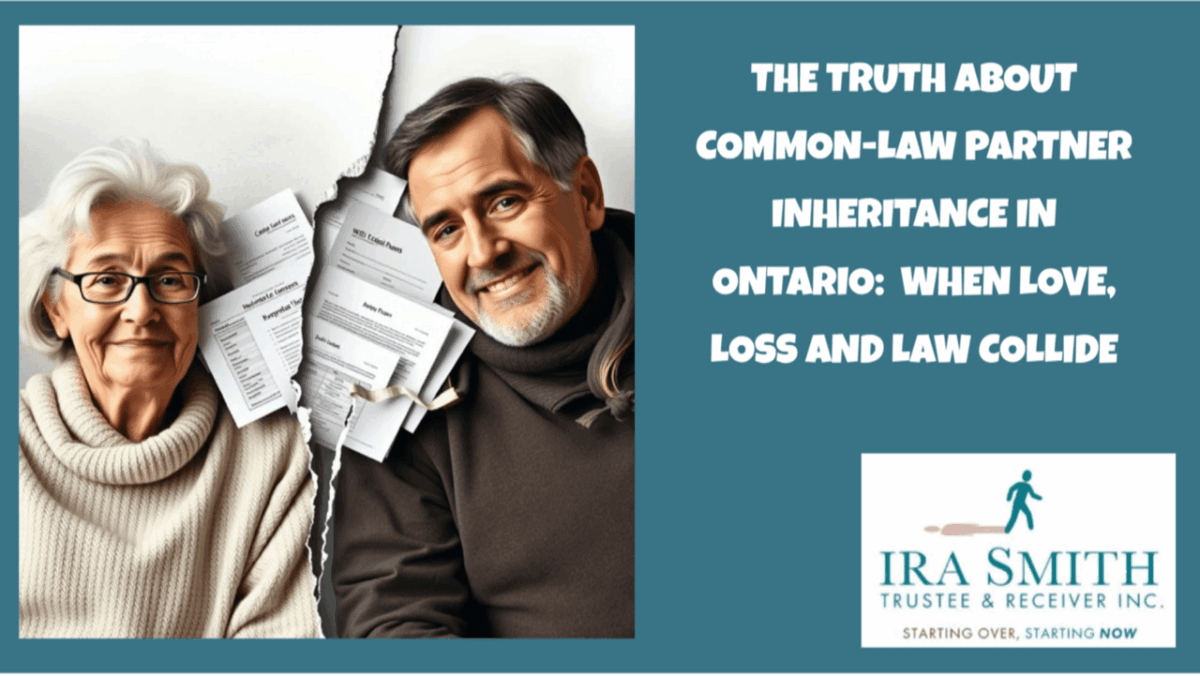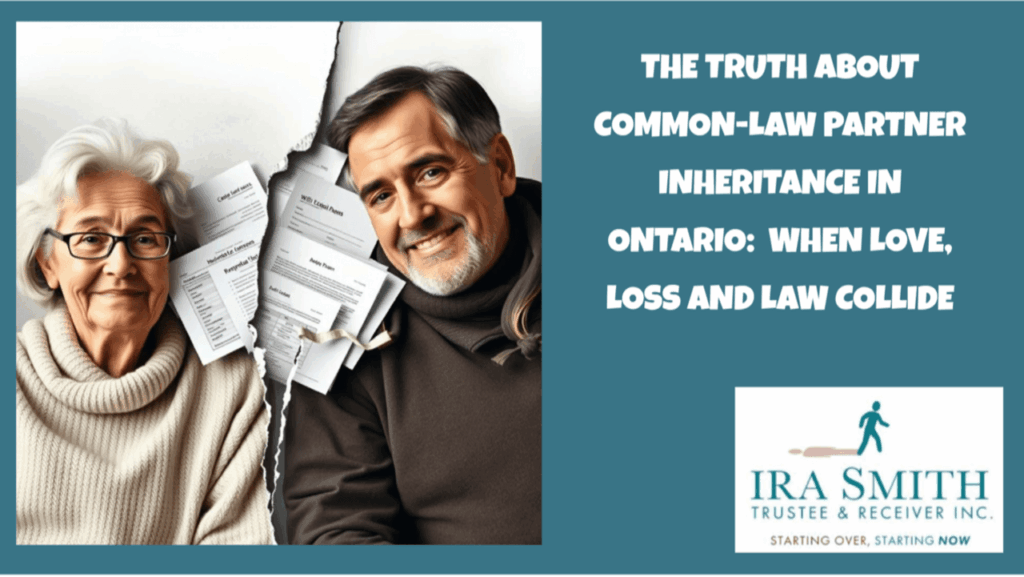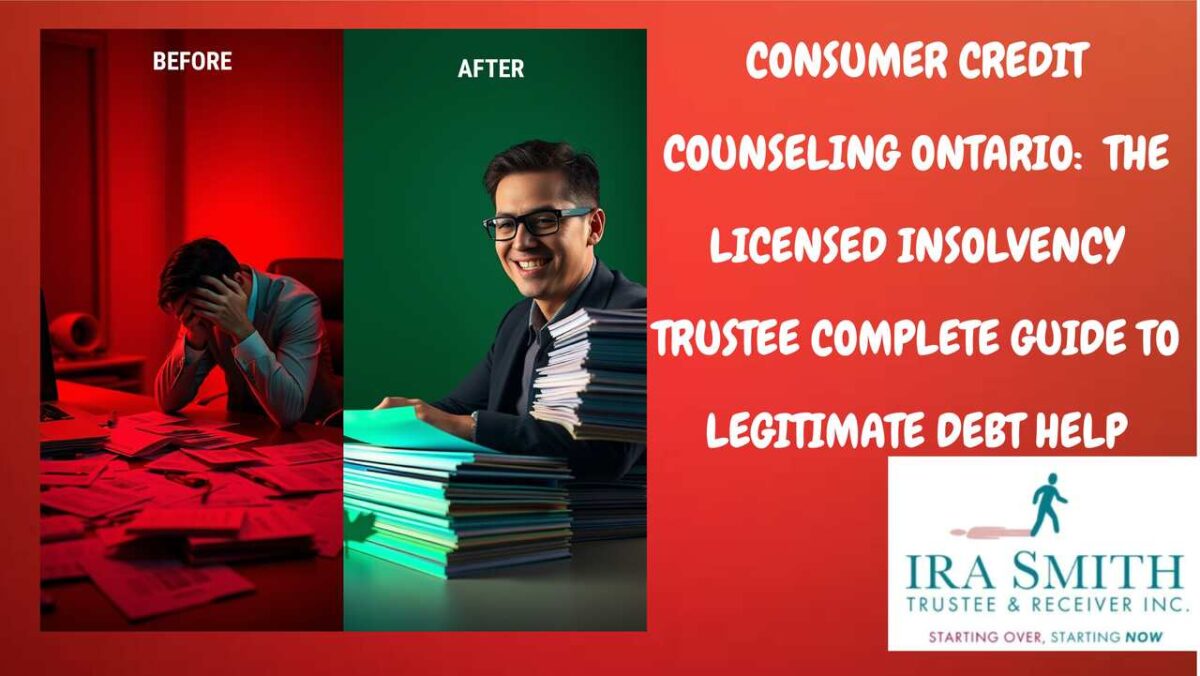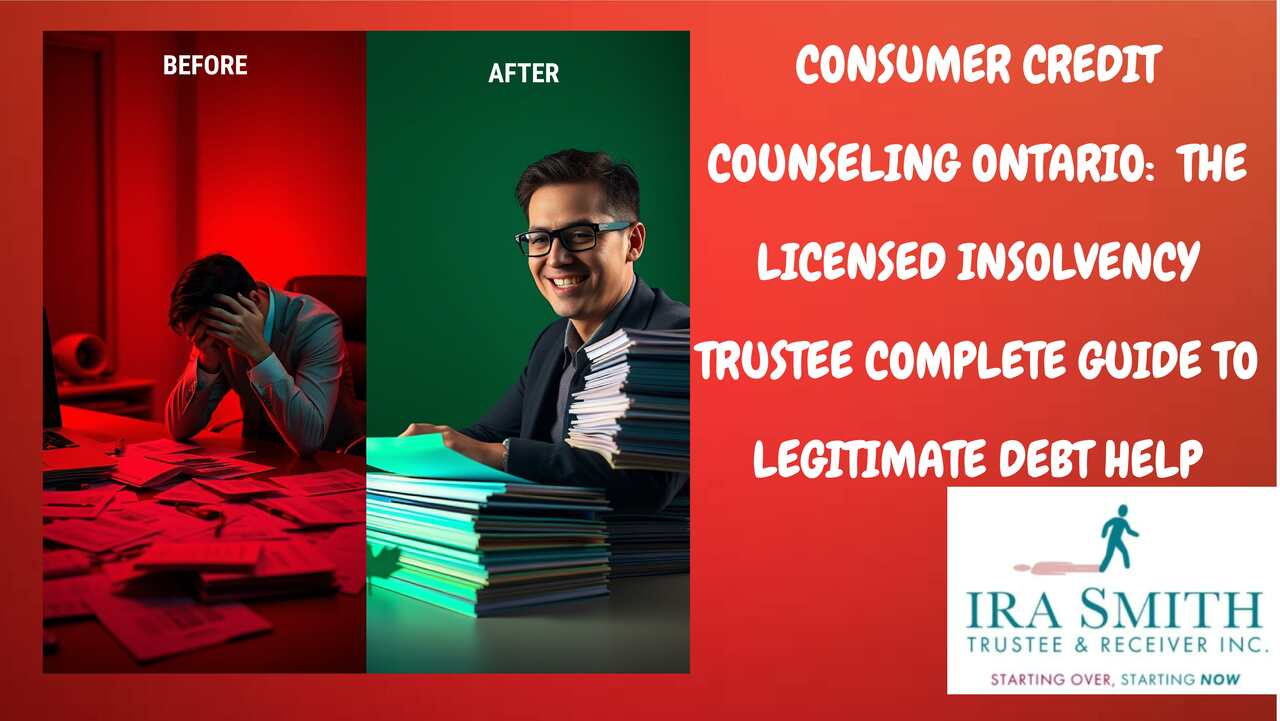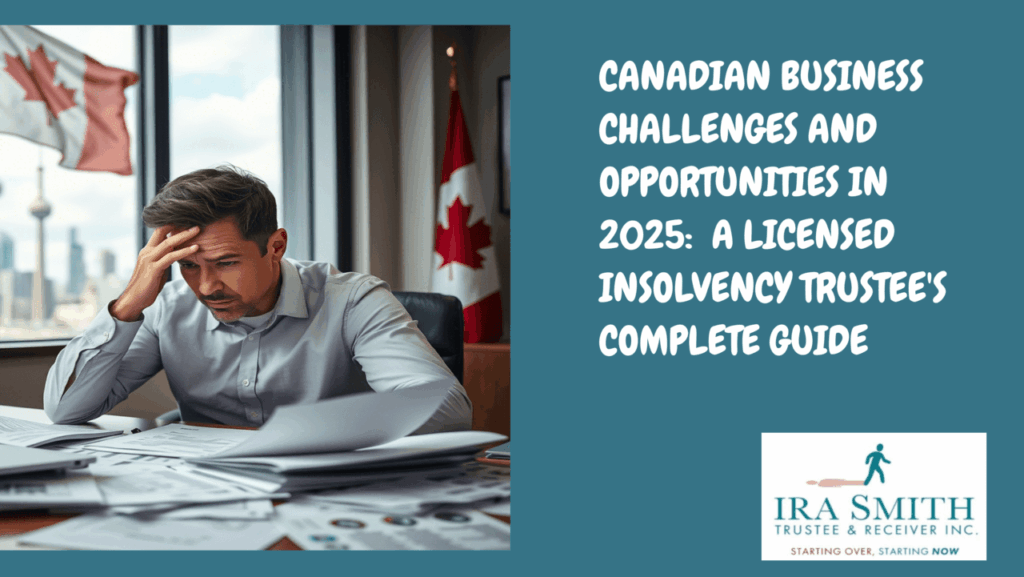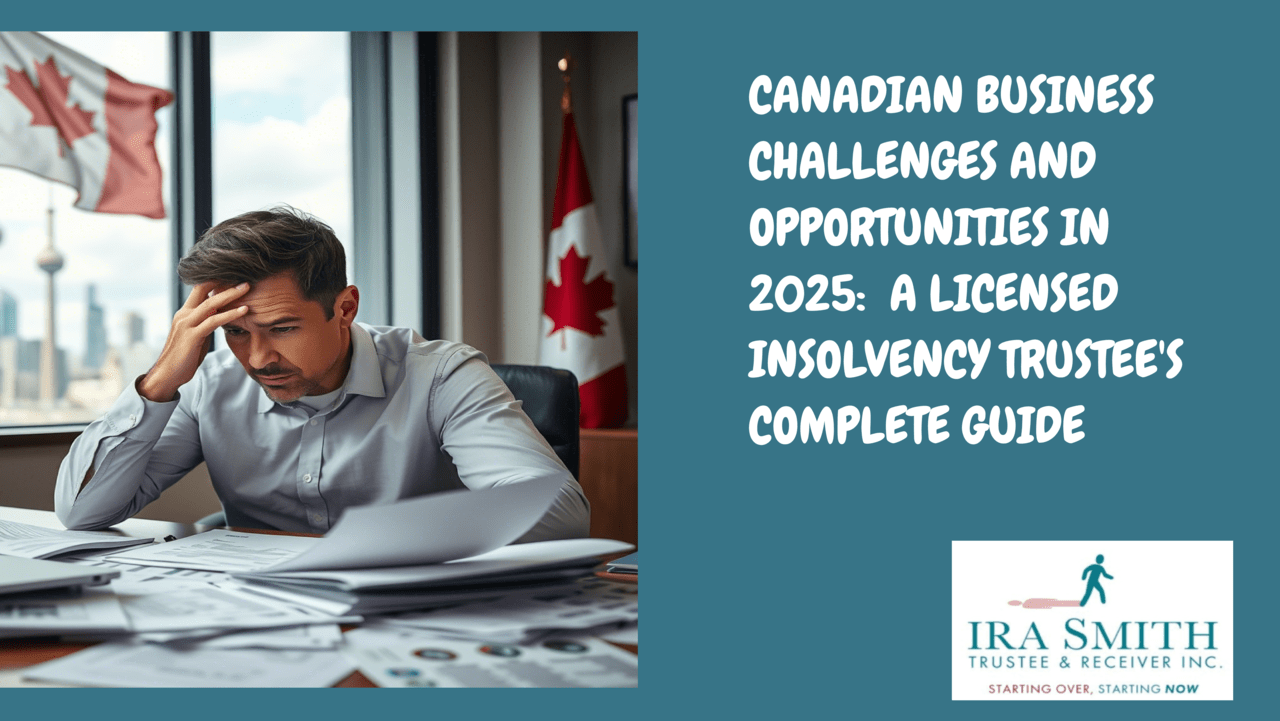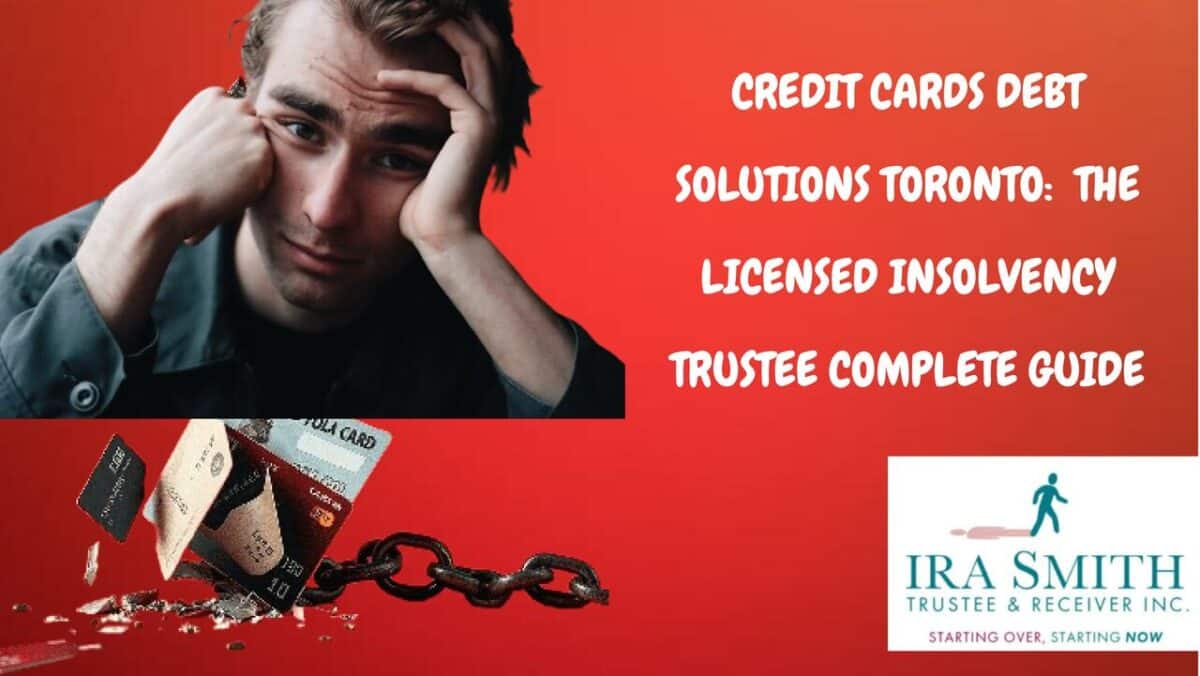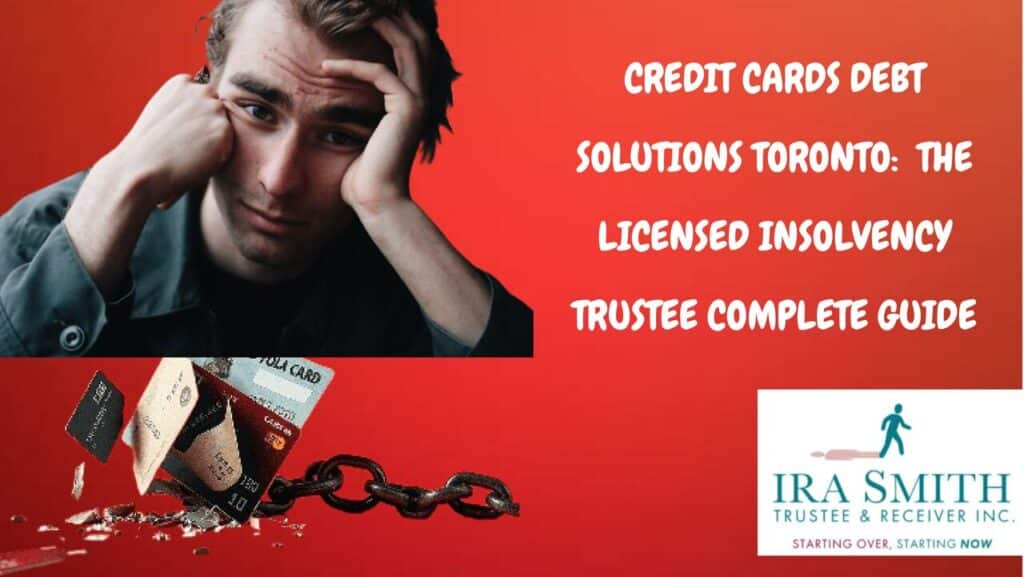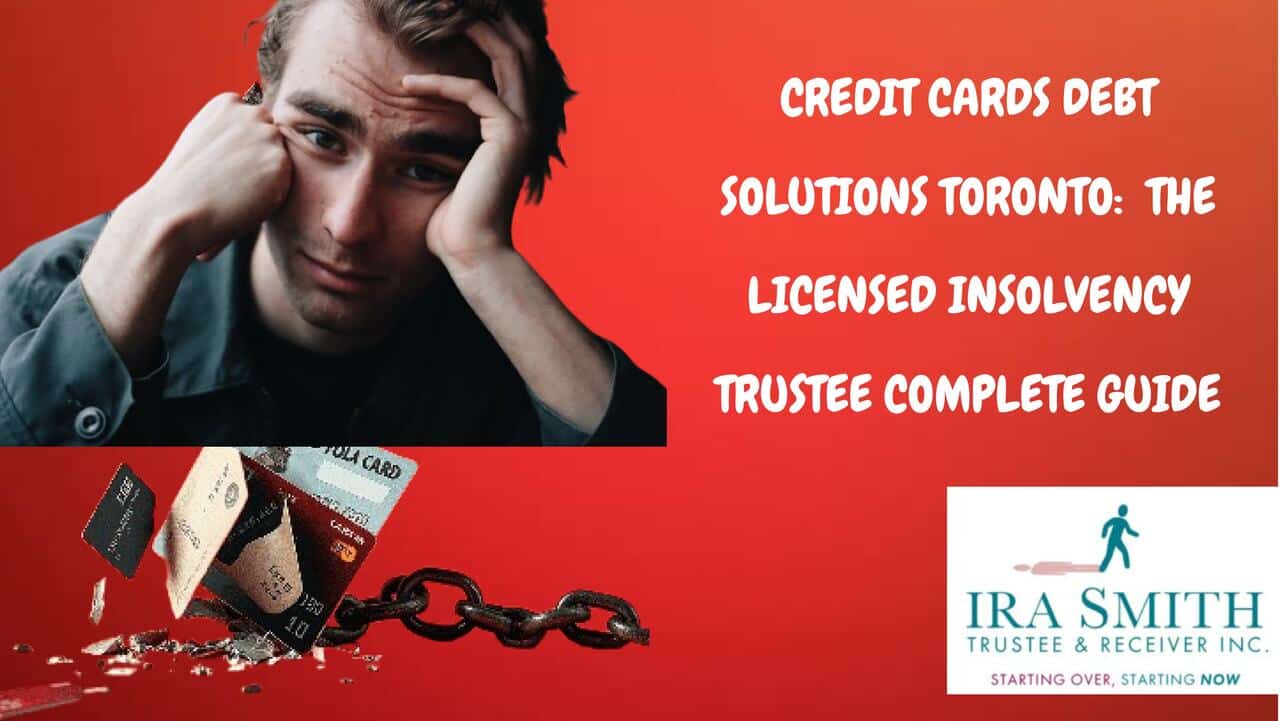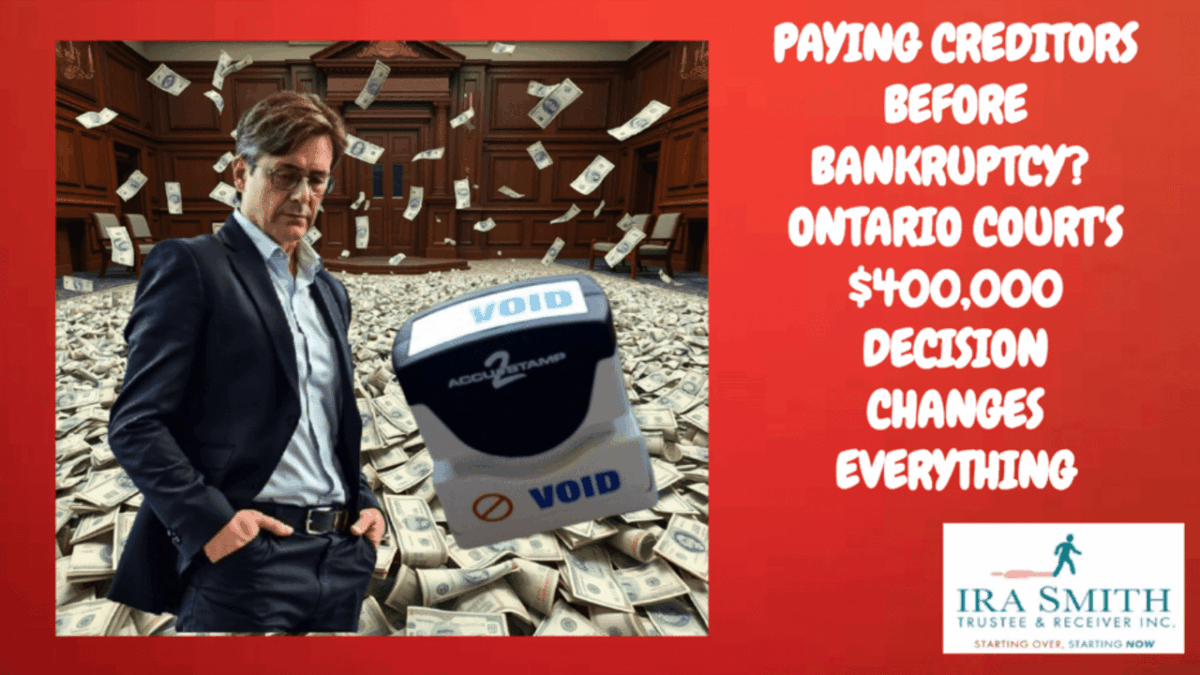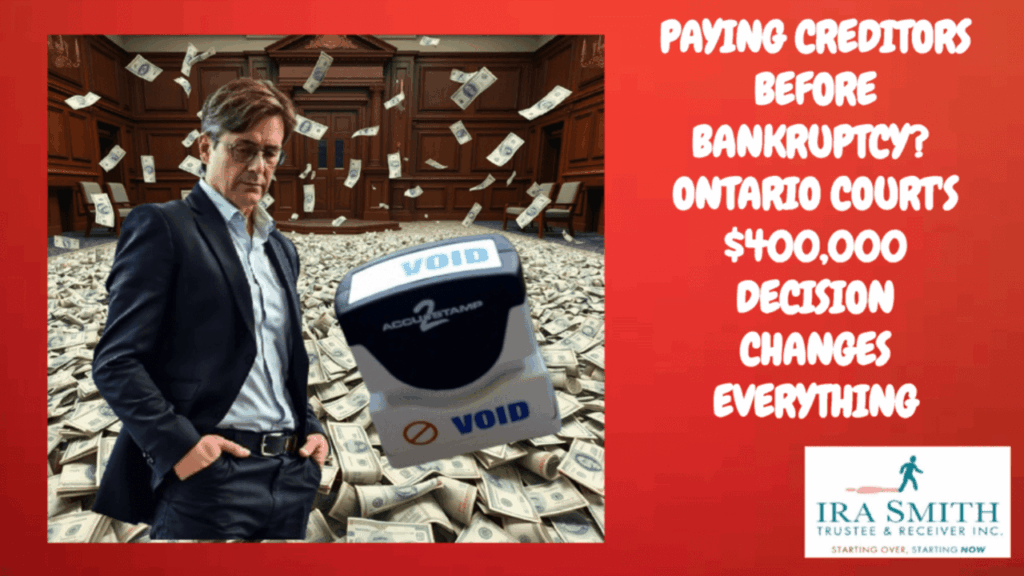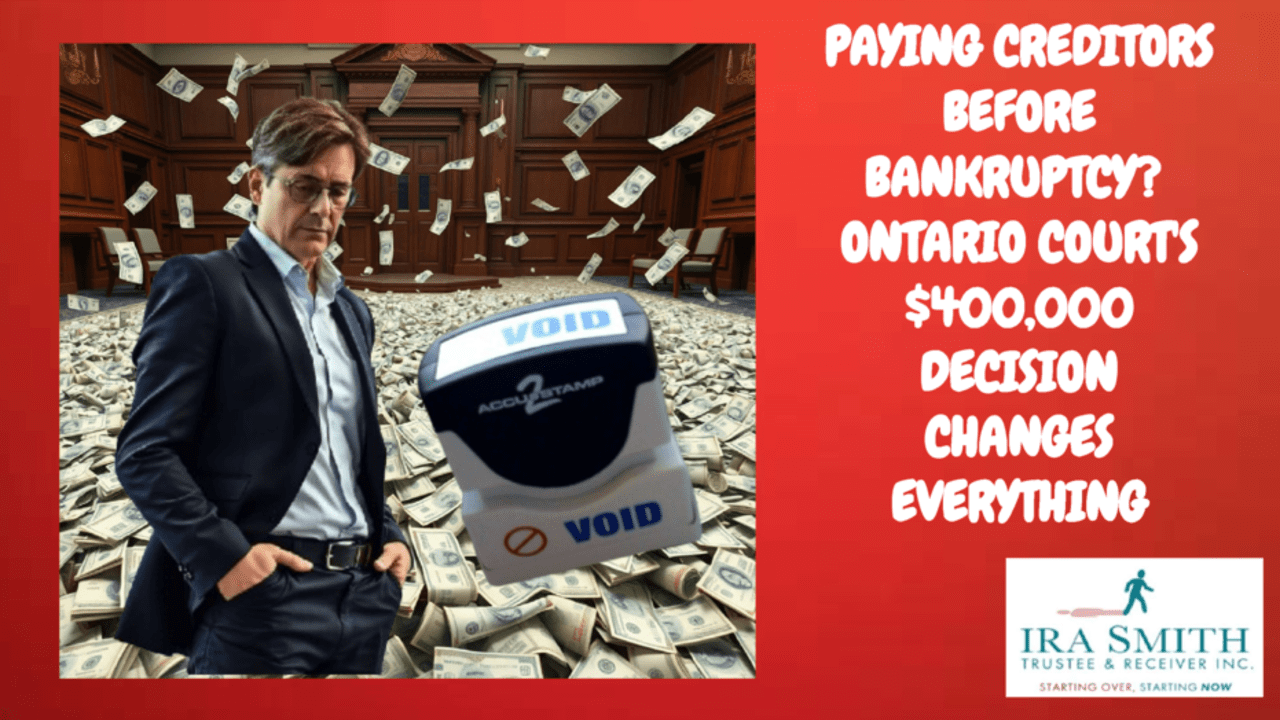Bankruptcy and Insolvency Act Forms Introduction
Dealing with debt can feel overwhelming. If you are a person looking into bankruptcy or a consumer proposal in Canada, or you are a business owner putting your company into a formal financial restructuring process, you’ll need to understand the paperwork involved by the insolvency profession.
As a Licensed Insolvency Trustee who has helped many individuals, their families and companies in the Greater Toronto Area over the last 20 years, I’ll walk you through everything you need to know about the regulatory framework carried out through Bankruptcy and Insolvency Act forms and precedents.
What Are Bankruptcy and Insolvency Act Forms and Precedents?
Think of the Bankruptcy and Insolvency Act (BIA) forms as official paperwork required by the Canadian government when someone files for bankruptcy proceedings or makes a consumer debt proposal. The Office of the Superintendent of Bankruptcy creates these Bankruptcy and Insolvency Act forms to make sure the process is legal and fair for everyone involved. The Office of the Superintendent of Bankruptcy is part of Innovation, Science and Economic Development Canada.

These aren’t just suggestions – they’re required by law. Each form serves a specific purpose, like declaring bankruptcy, proving what creditors are owed, or reporting your monthly budget (Form 65). These necessary forms provides the Licensed Insolvency Trustee and all other stakeholders with the necessary information concerning the financial situation of the insolvent debtor, being either a person or company.
Why These Bankruptcy and Insolvency Act Forms Matter to You
Legal Protection: Once filed, these Bankruptcy and Insolvency Act forms stop creditors from calling you or taking money from your paychecks.
Clear Process: They create a step-by-step path to deal with your debt.
Your Rights: The forms protect both your rights and your creditors’ rights.
Fresh Start: Completing them properly gets you closer to financial freedom.
Who Needs Bankruptcy and Insolvency Act Forms?
- People filing for personal bankruptcy proceedings
- Individuals making consumer proposals
- A business owner facing financial trouble whose company enters formal financial restructuring proceedings, including bankruptcy protection
- Creditors are sent a notice in writing of your filing. Those who want to collect a portion of what they’re owed as a claim provable through the proof of claim process
- A Licensed Insolvency Trustee is the only authorized person in Canada to manage the insolvency process
The Most Important Forms You’ll Encounter
Here are the key Bankruptcy and Insolvency Act forms most people deal with (there are over 90 in total, but you won’t need them all):
Form 21 – Assignment for Bankruptcy
- What it does: Officially declares you bankrupt
- Who uses it: You and your trustee
- When: At the start of bankruptcy proceedings
Form 31 – Proof of Claim
- What it does: Creditors use this to prove what you owe them
- Who uses it: Your creditors who have a claim provable in your insolvency proceeding
- When: After you file for bankruptcy or a proposal
Form 47 – Consumer Proposal
- What it does: Your formal offer to pay creditors less than you owe
- Who uses it: You and your trustee
- When: If you choose a proposal instead of bankruptcy proceedings
Form 65 – Monthly Income and Expense Statement
- What it does: Shows your income and expenses each month
- Who uses it: You file this monthly during bankruptcy
- When: Throughout your bankruptcy period
Form 78 – Statement of Affairs (Business/Corporate Bankruptcy/Proposal)
- What it does: Lists everything your business owns and owes
- Who uses it: Your company and your trustee
- When: At the beginning of the corporate bankruptcy/proposal process
Form 79 – Statement of Affairs (Personal)
- What it does: Lists everything you own and owe
- Who uses it: You and your trustee
- When: At the beginning of the process
Form 84 – Certificate of Discharge
- What it does: Officially ends your bankruptcy
- Who uses it: Your trustee files this for you
- When: When you complete all bankruptcy requirements, you are entitled to a discharge certificate

Note: New versions of Bankruptcy and Insolvency Act Forms 31, 65, 78, and 79 must be used for all cases filed after September 16, 2024.
Your Step-by-Step Journey Through the Forms
Based on my experience with hundreds of clients, here’s what happens:
Step 1: Free Consultation
We meet to discuss your situation. I will explain your options and what paperwork is involved. No Bankruptcy and Insolvency Act forms have been filed yet – this is just information gathering.
Step 2: Document Collection
You gather information about your debts, assets, income, and expenses. I provide you with a checklist so nothing gets missed.
Step 3: Form Preparation
Together, we complete your forms. I handle the technical aspects while you provide the financial information. Common Bankruptcy and Insolvency Act forms at this stage include your Assignment (Form 21) and Statement of Affairs (Form 79 for an individual or Form 78 for a Company).
Step 4: Filing with the Government
I file your completed forms electronically with the local representative for the Office of the Superintendent of Bankruptcy, known as the Official Receiver for that bankruptcy district. Once filed, creditor protection begins.
Step 5: Creditor Notification
Creditors receive notice in writing of your bankruptcy or proposal. They can then file their Bankruptcy and Insolvency Act forms (like Form 31) to participate.
Step 6: Ongoing Requirements
During bankruptcy, you’ll file monthly income and expense statements and may attend meetings. I guide you through each requirement.
Step 7: Completion
When you finish all duties, I will file your discharge papers (Form 84), which legally end your bankruptcy.
Recent Changes You Should Know About
The government updated several key forms in September 2024. If you’re starting the process now, you’ll use the newest versions. These updates made some Bankruptcy and Insolvency Act forms clearer and added new questions about your financial situation.
Common Frequently Asked Questions About Bankruptcy and Insolvency Act Forms
What are the common signs that indicate I might need to consider bankruptcy or a consumer proposal?
If you are experiencing persistent collection calls, constant anxiety about your bills, sleepless nights, and feel trapped by overwhelming unsecured debt, these are strong indicators that exploring options under the Bankruptcy and Insolvency Act could be beneficial.
What is the primary purpose of Form 79 Statement of Affairs in the bankruptcy or consumer proposal process?
Form 79, also known as the Statement of Affairs, is a crucial, government-mandated document that provides a comprehensive, sworn disclosure of your entire financial situation. This includes all your assets, debts, income, and the reasons for your financial difficulties, forming the essential basis for your debt relief plan.
What immediate relief can I expect once I file for bankruptcy or a consumer proposal?
The moment the documents are accepted by the Official Receiver of the bankruptcy district, a “stay of proceedings” comes into effect. This legal protection immediately stops direct contact from your creditors, putting an end to collection calls and significantly reducing your financial stress, allowing you to breathe again.
What is the role of a Licensed Insolvency Trustee in helping with debt?
A Licensed Insolvency Trustee is the only professional in Canada to be the legally authorized person to administer bankruptcies and consumer proposals. They serve as your guide, explaining your available options, preparing all necessary legal documents like Form 79, and managing all communications with your creditors on your behalf.
What happens if I make a mistake on a form?
Small errors can usually be corrected. Major mistakes or missing information can delay your case. That’s why working with a Licensed Insolvency Trustee is important – we catch these issues before they become problems.
Can I fill out the forms myself?
Legally, yes. Practically, it’s not recommended. In my 15+ years of practice, I’ve seen people struggle with forms that seem straightforward but have legal implications they don’t understand.
How long does the paperwork take?
For most people, we can complete the initial Bankruptcy and Insolvency Act forms before you arrive for our meeting to sign and file the forms. Monthly forms take about 15 minutes once you get used to them.
What kind of information do I need to provide to my Licensed Insolvency Trustee to start the process?
To begin, you will need to provide your Licensed Insolvency Trustee with full personal details, a complete list of everything you own (assets), all your debts (both secured and unsecured), the names and addresses of all your creditors, any expected future income or lump sums, and the underlying reasons for your current financial situation. Also helpful are:
- Recent pay stubs or proof of income
- Bank statements
- Credit card statements
- Loan documents
- Property tax bills
- List of monthly expenses
- Any legal documents related to your debts
Why is complete honesty crucial when providing information for forms like Form 79?
Complete honesty is the absolute foundation of the entire debt relief process. Attempting to conceal assets or providing false information can lead to severe consequences, including the denial of your bankruptcy or charges of perjury, which would undermine your path to a fresh start.
How does the process of filing for bankruptcy or a consumer proposal lead to a “fresh start”?

Guided by your Licensed Insolvency Trustee and based on the detailed financial disclosure provided in Bankruptcy and Insolvency Act forms like Form 79, this legal process offers a clear path to eliminate or significantly reduce your debt. This allows you to regain control of your finances, alleviate stress, and begin anew without the burden of your past financial obligations.
Tips from My Experience
After helping people through this process, here’s my advice:
Be completely honest. Hiding assets or debts can have serious legal consequences. I’ve seen cases delayed by months because someone wasn’t upfront initially.
Keep copies of everything. You’ll want records for your the files.
Ask questions. If something doesn’t make sense, speak up. Understanding the process reduces stress.
Meet deadlines. Some forms have strict timelines. Missing them can cost you money or delay your fresh start.
Stay in touch. Let me know if your financial situation changes during the process.
Red Flags: Mistakes That Can Hurt Your Case
- Using old versions of forms after new ones are released
- Forgetting to include all debts or assets
- Missing required signatures
- Providing outdated financial information
- Waiting too long to file the required monthly reports
How Working with a Licensed Insolvency Trustee Helps
Only Licensed Insolvency Trustees are authorized persons who can file BIA forms and handle bankruptcies in Canada. Here’s what this means for you:
Expertise: We know the forms inside and out. I’ve completed thousands of these documents.
Legal Protection: Once I file your forms, creditors must stop collection activities immediately.
Government Oversight: We’re regulated by the federal government and must follow strict professional standards.
No Surprises: I explain each form and what it means for your situation.
Ongoing Support: You’re not alone in this process. I’m here to answer questions and handle complications.
Your Next Steps
If you’re in the Greater Toronto Area and considering bankruptcy or a consumer proposal:
- Book a free consultation – Call me and we’ll discuss your specific situation and options
- Bring your financial documents – The more complete your information, the better I can help
- Ask about alternatives – Bankruptcy isn’t always the best solution
- Let me handle the paperwork – Focus on your future while I manage the legal requirements
Ready to take the next step? Contact me for a confidential, no-obligation consultation. Together, we’ll review your situation and determine the best path forward.
If you’re struggling with debt, don’t wait. The longer you wait, the fewer options you might have. Contact a Licensed Insolvency Trustee today for a free consultation.
At Ira Smith Trustee & Receiver Inc., we’ve helped thousands of Canadians overcome their debt challenges, starting with honest, professional consumer credit counselling. We’ll review your complete financial situation, explain all your options, and help you choose the best path forward.
Remember: you don’t need to pay someone to access professional help. Real consumer credit counselling starts with a free consultation and continues with transparent, regulated services designed to get you back on your financial feet.
You’re not alone in this. There’s a path forward, and it starts with reaching out for the right kind of help. Take that step—you deserve it. If you’re a GTA resident dealing with overwhelming debt, don’t wait for your credit situation to get worse. As a licensed insolvency trustee serving Toronto, Mississauga, Brampton, Markham, and surrounding areas, I’m here to help you understand your options.
Free consultation available:
- No obligation to proceed
- Complete review of your debt and credit situation
- Clear explanation of how debt solutions affect your credit score
- Practical next steps you can take immediately
Remember: Your current financial situation doesn’t define your future. With the right help and information, you can overcome both debt challenges and credit score problems.
As a licensed insolvency trustee serving the Greater Toronto Area, I encourage consumers and business owners to view financial difficulties not as failures but as challenges that can be addressed with proper guidance. By understanding the warning signs of insolvency and seeking professional advice early, many people and businesses can find a path forward – whether through restructuring, strategic changes, or in some cases, an orderly wind-down that protects their future opportunities.
Remember: The earlier you seek help for company insolvency concerns, the more options you’ll have.
If you or someone you know is struggling with too much debt, remember that the financial restructuring process, while complex, offers viable solutions with the right guidance. As a licensed insolvency trustee serving the Greater Toronto Area, I help entrepreneurs understand their options and find a path forward during financial challenges.
At the Ira Smith Team, we understand the financial and emotional components of debt struggles. We’ve seen how traditional approaches often fall short in today’s economic environment, so we focus on modern debt relief options that can help you avoid bankruptcy while still achieving financial freedom.
The stress of financial challenges can be overwhelming. We take the time to understand your unique situation and develop customized strategies that address both your financial needs and emotional well-being. There’s no “one-size-fits-all” approach here—your financial solution should be as unique as the challenges you’re facing.
Your financial future is too important to leave to chance. Choose regulated, professional consumer credit counselling and take the first step toward financial freedom today.
If any of this sounds familiar and you’re serious about finding a solution, reach out to the Ira Smith Trustee & Receiver Inc. team today for a free consultation. We’re committed to helping you or your company get back on the road to healthy, stress-free operations and recover from financial difficulties. Starting Over, Starting Now.
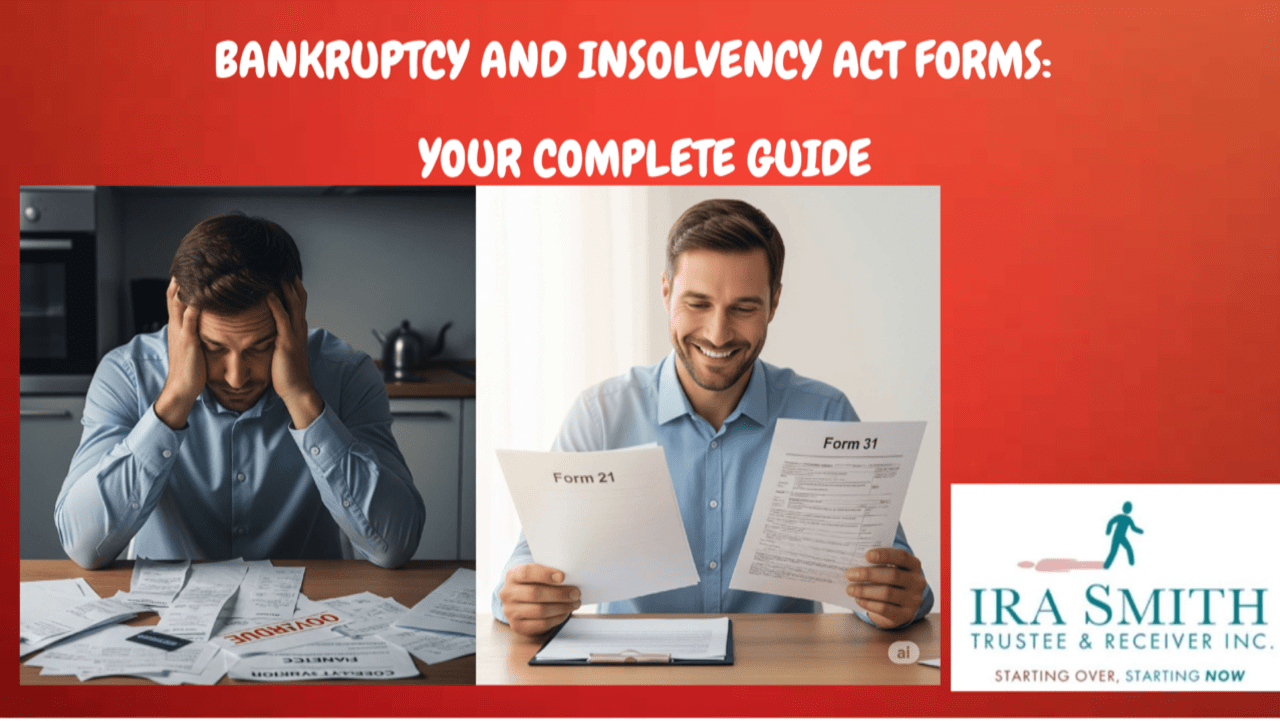
The information provided in this blog is intended for educational purposes only. It is not intended to constitute legal, financial, or professional advice. Readers are encouraged to seek professional advice regarding their specific situations. The content should not be relied upon as a substitute for professional guidance or consultation. The author, Ira Smith Trustee & Receiver Inc., and any contributors do not assume any liability for any loss or damage.

